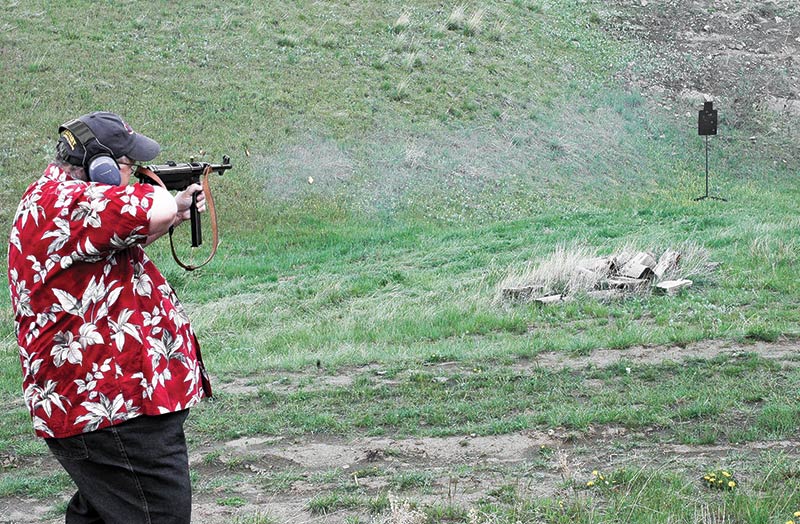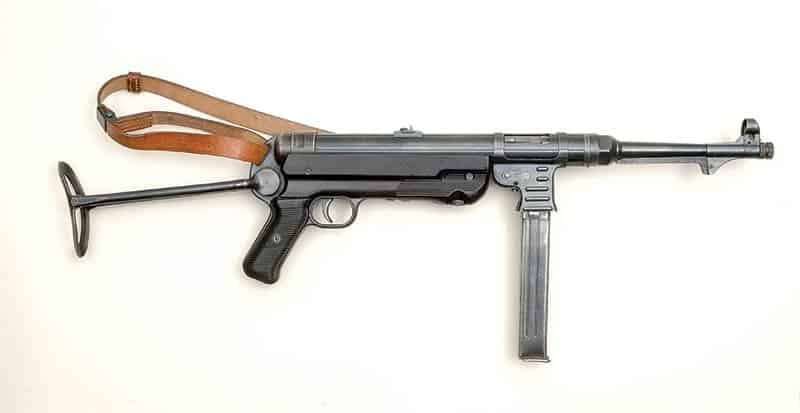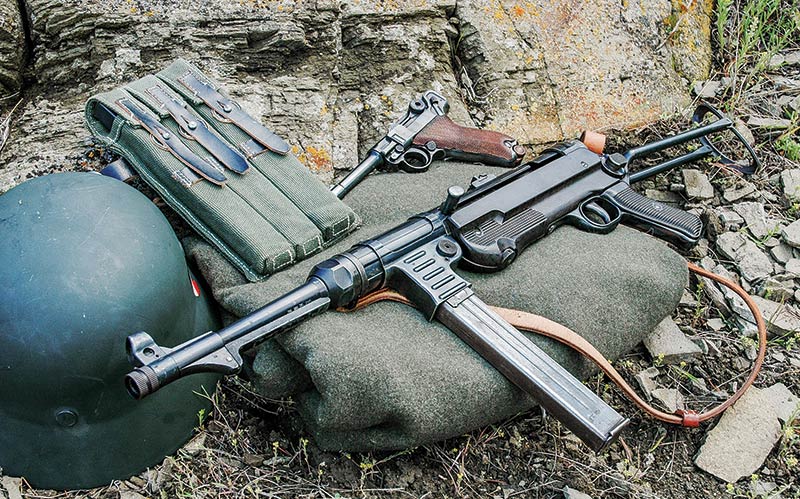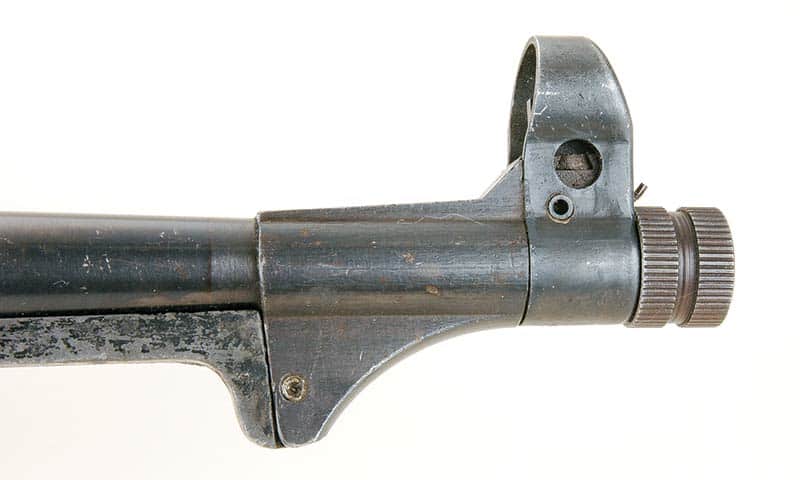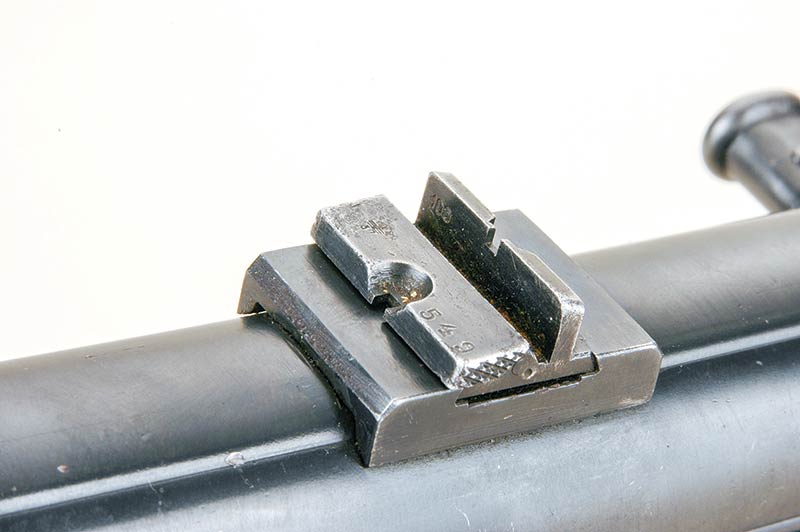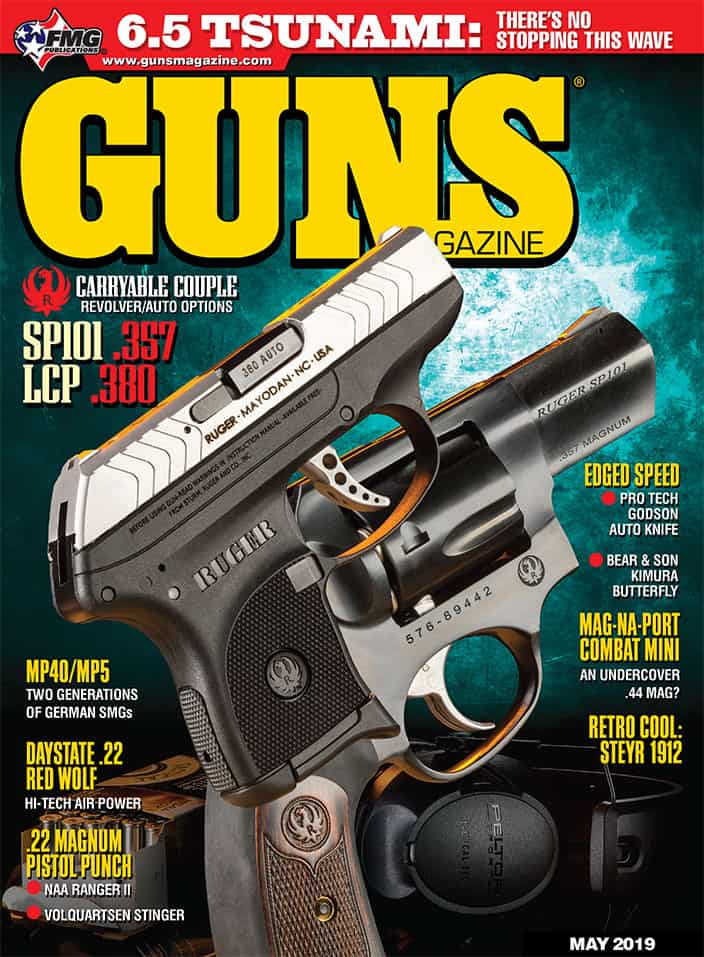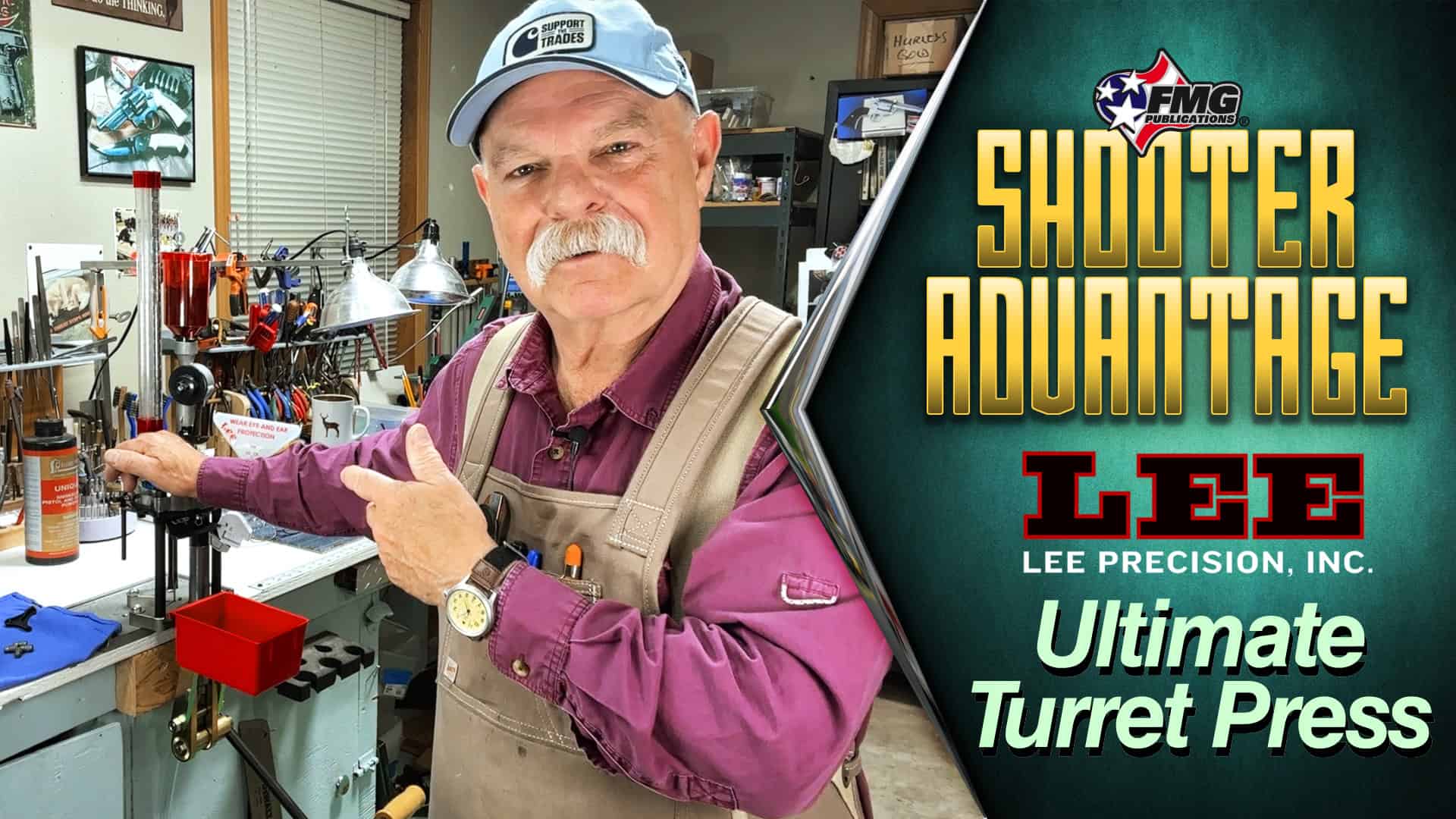Last Gun To Go?
You Won’t Pry The MP40 From DUKE’S Cold, Dead Hands
When a visitor recently asked me, “Which gun would you sell dead last?” I couldn’t give an answer.
Later when thinking about it, I applied reverse engineering to the matter. Which one did I dream of owning from the earliest age? Which gun did I finally buy after realizing I was entering the “now or never” stage of life?
Go For It
The answer to both questions? My German MP40 submachine gun. Consider this: I bought my very first gun magazine at age 13 in 1962 because it contained a photograph of a Viet Cong guerilla packing one.
However, most of my life I was frustrated about owning a real MP40. I figured they cost too much and the paperwork was too involved — owning an MP40 would be taking a long step and my legs are awfully short. I then attended a gun show in Billings in December 2007. I didn’t want to go at first as there were no more Old West guns I wanted to buy; nothing seemed remotely interesting anymore. However, my good friend Kirk Stovall prevailed on me to go.
There at the show an exhibitor had an eye-catching display of WWII guns including a fine condition MP40. I read the price tag and almost got woozy!
On the way home Kirk said, “I don’t understand why you don’t buy that MP40? Ever since I’ve known you, you’ve talked about them. You even bought that toy MP40 BB gun!”
“Didn’t you see the price tag?” I asked. “It was more than Yvonne and I paid for our first house!”
“You have lots of guns in the vault whose values add up to more than that MP40 costs. And they’re guns I know you haven’t shot in years. You could sell them, never miss one, and have the one gun you’ve always wanted,” Kirk pointed out.
Suitably chastened, I followed Kirk’s advice and bought the MP40 (along with several other WWII SMGs after a decent interval). It’s certainly added spice to an aging gun’riter’s life!
A New Generation Begins
Strangely enough, the MP40 story actually started with Germany’s Artillery Lugers. Those guns were the long barreled Lugers for which flat wooden stocks and 32-round drum magazines were developed. They fired 9mm Parabellum in semi-auto mode and German soldiers used them to great effect in trench raids starting in 1917. A young German weapons designer named Hugo Schmeisser then developed a full-auto machine pistol — the MP18/1. It was wood stocked and used the same drum magazines as the Artillery Luger. These early SMGs got into combat in the last stages of World War I.
The years between the world wars saw the SMG develop into a full-fledged combat weapon. Except for America’s fabled Thompson, most SMG developments were in Europe. Schmeisser improved the MP18/1 and there were several other remodels well into the 1930s. Also in the 1930s, both Finland and the Soviet Union got into SMG production but Germany was the most innovative.
Their MP38 was the first “woodless” SMG, incorporating some primitive plastics. It had what we today call a folding stock (the Germans called it a “folding shoulder brace”). A rotating buttplate folded up against the receiver’s bottom and — of course — chambering was 9mm Parabellum.
Most wooden-stocked SMGs heretofore developed in Germany had their magazines sticking out to the left side. With the MP38 the magazine was inserted from the bottom and there was a flared receptacle serving as a handhold. Operation was extremely simple: insert a loaded magazine, pull the bolt back until it stopped and then pull the trigger. This was called “firing from an open bolt,” with the idea being air could pass through the barrel and aid in cooling. Function was full auto only. The only safety was a cut in the receiver where you could slide the bolt.
One factor led to some accidents carrying loaded MP38s. If a bump caused the bolt to travel backwards at all, the weapon would fire when it came forward again. For this reason the bolt-charging knob got a spring-loaded handle. When pushed inwards, the bolt cannot move. This improvement started with the MP38 and was standard on the MP40.
The reason MP40s supplanted MP38s was simply a matter of speeding production and material supply. MP38s required trained craftsmen and precision machinery. MP40s were mostly made of stamped steel parts, which required much less machine-work time. However, Mike Ingram’s The MP40 Submachine Gun says the MP40s (at 60 Reich marks) actually cost more to produce than the MP38 (57 Reich marks)!
The MP40 was originally designed and built by the German firm of ERMA. Later some were also made at Steyr Daimler Puch, C.G. Haenel and AG Werk in Austria. Mine was made by C.G. Haenel in 1941. Interestingly, most Americans have called MP40s “Schmeissers” after Herr Hugo. He actually had little or nothing to do with their development because he was working on the rifle that became the MP44 Sturmgewehr.
Shooting And Stripping
Of all my full-autos I find the MP40 easiest to hit with although it is more prone to function failures. Conversely my M1 Thompson has never failed to function. My MP40’s rate of fire sticks very close to 500 RPM while the Thompson gives more like 700 RPM. With a loaded 32-round magazine, an MP40 scales about 9 lbs. while the Thompson goes 13 lbs. with a loaded 30-round magazine.
I needed only one lesson from an instruction book to learn how to pull the MP40 apart for cleaning but after 10 years I still need the instruction book for the Thompson. With the Thompson, the rear sight is a bent piece of steel with a hole drilled through it. The MP40 has a two-leaf open sight — one marked for 100 meters, the other for 200. Both guns have blade fronts.
By photographs of German troops in WWII it would seem the MP40 (and MP38s) were as common as Mauser rifles. They were not, as approximately one to 1.5 million were made. Most MP40s went to infantry NCOs, paratroopers and armored vehicle crews — in fact, the downward protrusion under the MP40s barrel was to help keep the muzzle outside the view slits of vehicles when firing on enemy troops trying to climb aboard.
In truth, I don’t get out to fire my MP40 very often, perhaps a few hundred rounds a year. However, just a couple weeks ago I was firing it at a steel dueling tree from about 20 yards and until the magazine ran dry I could pretty much keep those paddles swinging!
It’s a great place I live in to be able to own and shoot an MP40 right on my own property!
